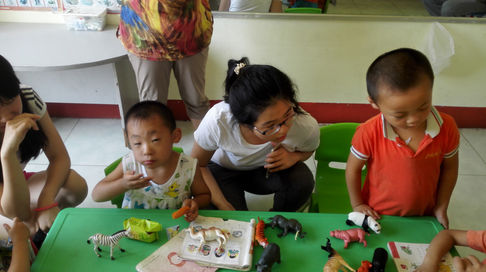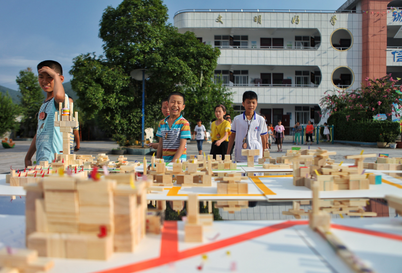MY VOLUNTEER
Through participatory space design, I worked with left-behind children in rural China to transform everyday materials into places of play, performance, and imagination. Each installation is not only built for them—but with them.
PARTICIPATION

EMPATHY

MAKING

Children ride and play on the “ofofofo” installation—twelve recycled bikes transformed into a carousel-like structure.

A close-up of children decorating the interior of the installation with colorful spray-paint art.

Camp volunteers interact with children at the exhibition table, showcasing architectural and musical creations.

Children ride and play on the “ofofofo” installation—twelve recycled bikes transformed into a carousel-like structure.
Blooming –Recycled Bike Playground
Jul 2021 | Puge County, Sichuan, China
Reused 12 abandoned ofo bikes to co-create a human-powered carousel with rural children.
Promoted sustainable design and participatory construction in the Daliang Mountain region.
The permanent installation now serves as a joyful "playground" on their school campus.
Music House – Sound Installation & Kids’ Amphitheater
Aug 2019 | Xishui County, Hubei, China
Built a musical playground using PVC pipes, allowing children to explore sound and structure.
Led a collaborative performance where kids played “We Will Rock You” with self-made instruments.
Fostered creativity and community through hands-on design and storytelling.
My Kingdom – Spatial Thinking through Play
Jun 2018 | Enshi, Guizhou, China
Guided children in designing and connecting their own “castles” with roads, bridges, and rivers.
Encouraged architectural imagination through hands-on building blocks and reflective materials.
The collective work formed a large-scale kingdom, helping children explore part-to-whole concepts.
These volunteer projects taught me how design can empower, connect, and bring joy—especially to those who are often left out of traditional systems. Working with left-behind children in rural China, I learned to co-create with empathy, adapt to real-world constraints, and see architecture not just as a product, but as a process of participation and care.














































.avif)
